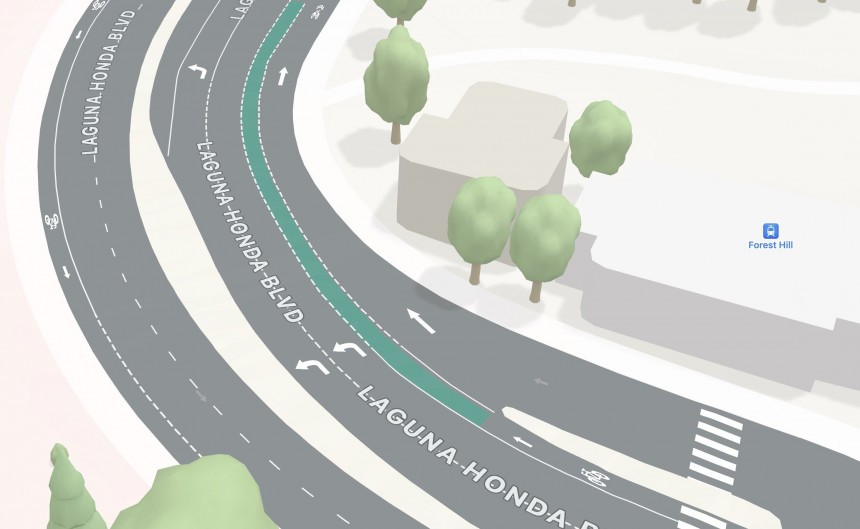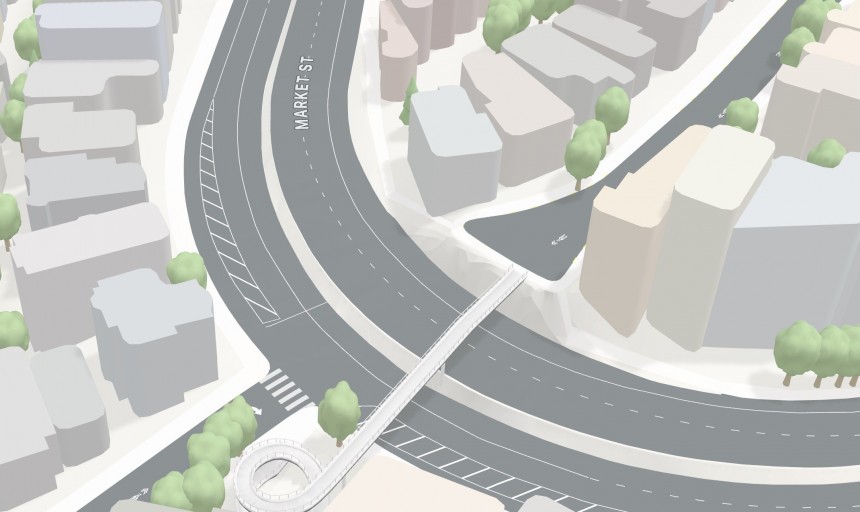The first name that comes to everybody's mind when mentioning navigation apps is Google Maps. Offered pre-loaded with Android and available from the App Store on iPhones, Google Maps is currently the number one mobile navigation solution.
It's freeware, comes with the essential feature lineup, is regularly getting improvements, and its maps are typically highly accurate. Thanks to the millions of devices where it's installed, Google Maps is also a valuable tool for anticipating traffic conditions.
Google Maps has long been the preferred choice in the Apple ecosystem, with iPhone users dumping the default navigation solution for Google's software. Apple Maps has never been considered a top navigation product despite using third-party maps from the leading names in the industry.
Its navigation engine was terrible and often guided users to roads that didn't even exist. A decade ago, reports highlighting Apple Maps were very common, so users embarked on an en-masse transition to Google Maps without ever looking back.
Apple is now trying to regain the lost share in the mapping world by investing more aggressively in Apple Maps.
A few years ago, the iPhone maker started the rollout of the detailed city experience, an ambitious effort that involves the transition from third-party to in-house maps with rich details like crosswalks, sidewalks, medians, trees, 3D buildings, and improved navigation. It also includes incident reporting, a feature available in Google Maps for years. Incident reporting is also the key feature of Google-owned Waze, a separate offering specifically focused on traffic navigation.
The debut of iOS 17 last fall also included support for offline maps, a feature that has somehow been ignored by Apple for years. Offline maps allow users to navigate without an Internet connection, and they've been available in Google Maps for years.
The upcoming iOS update due in the fall will also include new functionality already bundled with Google Maps. Apple will allow Maps users to configure their routes on computers and send them to the iPhone and CarPlay using an Apple ID. Google users can already do this in the web-based version of Google Maps.
In the last few weeks, I've seen more and more people claiming that Apple Maps is a mature navigation product now, and replacing it with Google Maps no longer makes sense. All these improvements prove this point, these users claim, and confirm that the iPhone maker is catching up with its top rival.
Is this really accurate? Yes and no.
Apple Maps is indeed getting long overdue updates, such as offline maps, and the detailed city experience turns it into one of the best navigation apps on the market. However, it's too early to call Apple Maps a Google Maps killer.
Apple has adopted a painfully slow rollout model for the detailed city experience. It enables the new experience for users worldwide in stages, albeit it's all linked with specific and very limited regions. This is why the detailed city experience is only available in some cities and countries, and not even the United States is fully included in the update.
The massive overhaul included in the detailed city experience involves resources that even a company the size of Apple struggles to handle. Considering the new maps, Apple must scan every single location worldwide, process the maps, create the 3D models, and only when everything is ready start the rollout to users in the region.
While I'm aware that Apple can't just touch a switch and enable the detailed city experience for everybody, it's important to remember that the first users got it three years ago. Apple hasn't released a single expansion in 2024, and large countries worldwide, including European markets where iPhones dominate the mobile space, are yet to get the new maps.
The second big problem is that Apple still ties all Apple Maps updates to new iOS releases. Apple can't update Apple Maps without shipping an iOS update, whereas Google Maps gets improvements through the app store, just like a regular application. This is why Apple Maps refinements land at a painfully slow pace, including the long overdue features like the support for configuring routes on PCs.
Meanwhile, Google Maps gets updates faster, including features that Apple isn't even working on. For example, Google Maps will begin monitoring the battery level and automatically suggest charging stations when the charge drops below a certain threshold.
The answer to the question in the headline is more complex than a simple yes or no. Apple Maps is indeed catching up, but the roadblocks slowing down the release keep Google Maps the clear leader in this race. Considering Apple has already ditched the Apple Car project, becoming more committed to Apple Maps is the only way to remain relevant in the automotive battle. This year's WWDC could provide us with several big announcements on the Maps front, albeit Apple might need more time to get everything together and express its commitment to the navigation battle.
Google Maps has long been the preferred choice in the Apple ecosystem, with iPhone users dumping the default navigation solution for Google's software. Apple Maps has never been considered a top navigation product despite using third-party maps from the leading names in the industry.
Its navigation engine was terrible and often guided users to roads that didn't even exist. A decade ago, reports highlighting Apple Maps were very common, so users embarked on an en-masse transition to Google Maps without ever looking back.
Apple is now trying to regain the lost share in the mapping world by investing more aggressively in Apple Maps.
The debut of iOS 17 last fall also included support for offline maps, a feature that has somehow been ignored by Apple for years. Offline maps allow users to navigate without an Internet connection, and they've been available in Google Maps for years.
The upcoming iOS update due in the fall will also include new functionality already bundled with Google Maps. Apple will allow Maps users to configure their routes on computers and send them to the iPhone and CarPlay using an Apple ID. Google users can already do this in the web-based version of Google Maps.
Is this really accurate? Yes and no.
Apple Maps is indeed getting long overdue updates, such as offline maps, and the detailed city experience turns it into one of the best navigation apps on the market. However, it's too early to call Apple Maps a Google Maps killer.
Apple has adopted a painfully slow rollout model for the detailed city experience. It enables the new experience for users worldwide in stages, albeit it's all linked with specific and very limited regions. This is why the detailed city experience is only available in some cities and countries, and not even the United States is fully included in the update.
While I'm aware that Apple can't just touch a switch and enable the detailed city experience for everybody, it's important to remember that the first users got it three years ago. Apple hasn't released a single expansion in 2024, and large countries worldwide, including European markets where iPhones dominate the mobile space, are yet to get the new maps.
The second big problem is that Apple still ties all Apple Maps updates to new iOS releases. Apple can't update Apple Maps without shipping an iOS update, whereas Google Maps gets improvements through the app store, just like a regular application. This is why Apple Maps refinements land at a painfully slow pace, including the long overdue features like the support for configuring routes on PCs.
The answer to the question in the headline is more complex than a simple yes or no. Apple Maps is indeed catching up, but the roadblocks slowing down the release keep Google Maps the clear leader in this race. Considering Apple has already ditched the Apple Car project, becoming more committed to Apple Maps is the only way to remain relevant in the automotive battle. This year's WWDC could provide us with several big announcements on the Maps front, albeit Apple might need more time to get everything together and express its commitment to the navigation battle.











